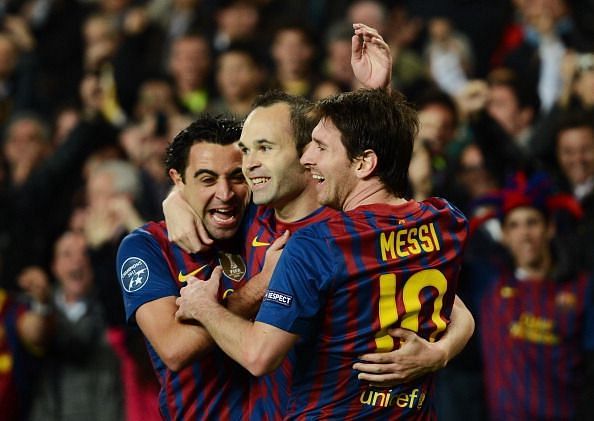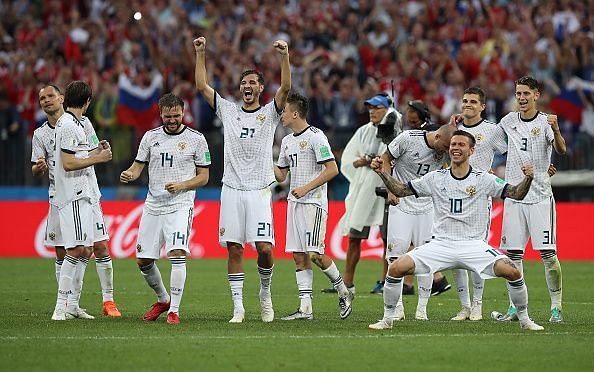
World Cup 2018: Time for Spain to move away from tiki-taka

If there was one thing that Vincent Del Bosque's Spain was known for, other than their 2010 World Cup win - it was their style of play. It was Spain's greatest ever team playing one of the most attractive styles of football, and it looked set for Spain to dominate football like Brazil had done in the past.
Oh, how the mighty have fallen!
In the 2018 World Cup, Spain ended the tournament with just one win to their name - a sluggish win against Iran in the second round of the group stage, and 3 draws (losing the last one to penalties against Russia).
In the process, they have conceded 6 goals, and scored 7; 3-3 against Portugal, 1-0 against Iran, 2-2 against Morocco and finally, 1-1 against Russia.
During the course of these four matches, they have completed an inherently unbelievable 3129 passes, an average of 782 passes per game. Argentina have the second most passes in the tournament, with some 800 passes less than what Spain has managed.
The origin

The 'Tiki-taka' system came to prominence when Johann Cruyff took over the reigns of Barcelona during the late 80s and the early 90s. It continued to gain momentum even after his departure, with Van Gaal and Rijkaard following the same system.
It reached its zenith at Barcelona when Pep Guardiola came to the fore - and arguably the greatest team in club football completed a sextuple of trophies playing some of the best football the world had ever seen.
And then, it caught on to the Spanish national team. A major portion of that Barcelona team played for La Furia Roja, and when then manager Vincent Del Bosque integrated the style into the team's play, it instantly paid dividends.
Spain went on to win the 2008 Euros, the 2010 World Cup in South Africa, and the 2012 Euros, combining the tiki-taka with more direct football when the style suited them. This bastardized version was the brain child of Luis Aragones - the manager who led Spain to the 2008 Euros.
Del Bosque's system was more focused on the Barcelona style of the tiki-taka, a return to the basics that saw small, physically suspect players go toe to toe against the bigger, more physically endowed players.
After Spain's exit in Brazil, the system came under attack. The Netherlands had taken apart everything Spain stood for, and Van Persie's soaring header was the cherry on top of a performance that showed the world that direct football could beat the slow build-up if done well.
The Nadir
Then came Barcelona's slight falling out with the system as well.
Luis Enrique's system at Barcelona invited contempt and concern from many a fan who had watched the beautiful passing from the years gone by. It was considered too direct to be played by Barcelona, and despite a treble in his first season and a double in the second, Enrique was shown the door after his third season at the club.
Bayern Munich shifted to a form of tiki-taka when Guardiola took over at the club, but after his departure they have returned back to their original blitzkrieg style of play.
Arsenal have lost all semblance of proper tactics during the last year of Wenger, and at present only Manchester City, under the tutelage of Pep Guardiola, are the last proponents of the system.
Spain came into the World Cup armed by only one established striker in Diego Costa, and a midfield that is enough to make any team envious. It did not feel the need for them to have another striker, considering that their midfield would be holding the ball most of the time anyway.
As it turns out, holding the ball is the only thing they know to do. Against Russia, Spain kept passing the ball with nothing coming out of it, and their play had no urgency whatsoever. They recorded their first shot on target only after Russia scored the equalizer, and even then it was too late.
The reason the plan failed was because tiki-taka in its basic form is designed to sandbag the opponent.
It aims to hit the opponent with a continuous flow of attack and tire out the defenders. It operates with the assumption that the ball should be regained within the opposition half, and never let them have a moment of respite.
That is where Spain failed.
Spain's newer system saw passes, but no urgency. It was possession for the sake of possession, and not possession that has the intent to score. At times, it was more boring than the 'bus-parking' by Mourinho, and that is saying a lot.
Most of the time, the ball remained in the Spanish half - with the defenders passing the ball over and over to each other, while the Russians stayed back and bided their time. The initial success of tiki-taka happened because the teams were not used to it, and got tired from chasing the ball for too long.

And when the plan failed, Spain did not have a fail-safe. Putting crosses into the box after taking out Diego Costa, unsurprisingly, did not work.
All the players on the field tried to pass themselves into a corner, before switching the ball to the other wing - rinsing and repeating till the final whistle.
Maybe Lopetegui's Spain would have done better, but that is not a question we can know the answer to. The fact is that Spain's tiki-taka failed, and rather spectacularly considering how well their opponents exposed a critical flaw in its design.
Football evolves with time. Just like how 'total football' came into praise and then disappeared from the limelight, it is time for tiki-taka to take a step back.
As teams get more and more defensive when playing against the possession based sides, they should at least temper their football with a good plan B if they want to get anywhere near a trophy again.